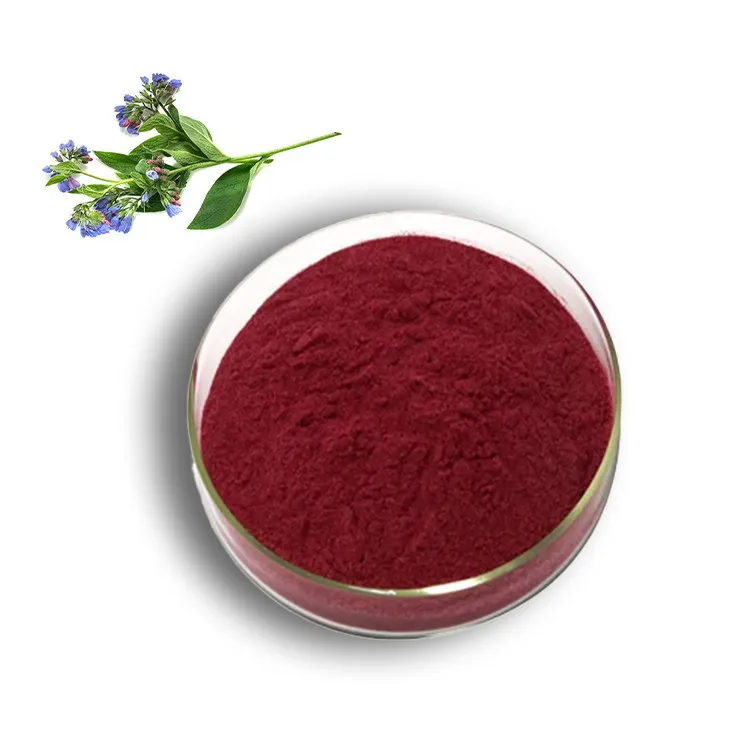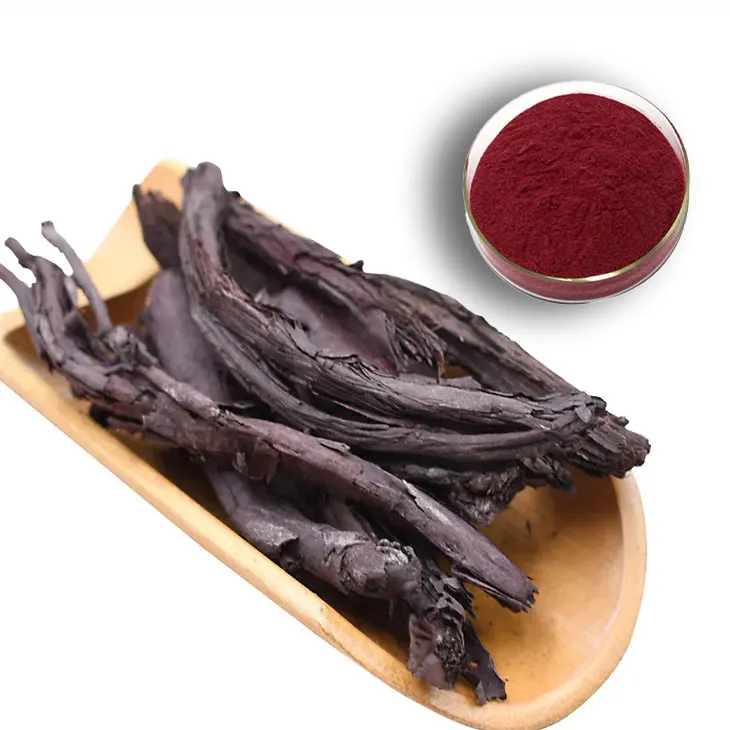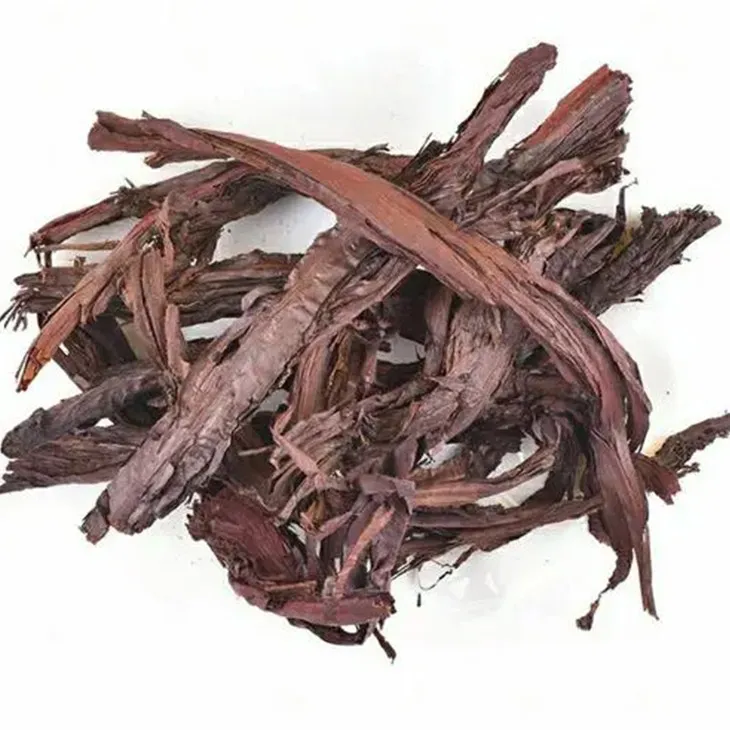- 0086-571-85302990
- sales@greenskybio.com
The extraction process of shikonin.
2024-11-26

1. Introduction
Shikonin is a valuable natural compound with diverse applications in various industries such as medicine, cosmetics, and food. Efficient extraction of Shikonin is crucial to meet the increasing demand for this compound. This article will comprehensively discuss the extraction process of Shikonin, from raw material collection to final purification.

2. Raw material collection
The first step in shikonin extraction is the collection of appropriate raw materials. Shikonin is mainly obtained from certain plant species. These plants are carefully selected based on their shikonin content. For example, plants from the Boraginaceae family are well - known sources of shikonin.
Sustainable collection practices are also important. Over - harvesting can lead to the depletion of these plant resources. Therefore, proper management strategies need to be implemented to ensure the long - term availability of raw materials for shikonin extraction.

3. Preparation of raw materials
Once the raw materials are collected, they need to be prepared for extraction. This involves several processes:
3.1 Cleaning
The collected plant materials are thoroughly cleaned to remove dirt, debris, and other impurities. This is an essential step as contaminants can interfere with the extraction process and affect the quality of the final product.
3.2 Drying
After cleaning, the plant materials are dried. Drying helps to reduce the moisture content, which can also have an impact on extraction efficiency. Different drying methods can be used, such as air - drying or using drying ovens at a controlled temperature.
3.3 Grinding
The dried plant materials are then ground into a fine powder. Grinding increases the surface area of the raw materials, which facilitates better contact with the extraction solvent and thus improves the extraction efficiency.

4. Solvent - based extraction
Solvent - based extraction is a commonly used method for shikonin extraction. The choice of solvent is critical as it determines the extraction efficiency and the purity of the final product.
4.1 Selection of solvents
Several solvents can be considered for shikonin extraction. Ethyl acetate is one of the popular solvents due to its good solubility for shikonin and relatively low toxicity. Another option is hexane, which can also effectively extract shikonin in some cases. However, hexane is more flammable and requires careful handling.
Methanol, as mentioned earlier, can also be a potential solvent. It has a high solubility for shikonin, but it also has some disadvantages such as being more polar, which may lead to the extraction of more unwanted polar compounds along with shikonin.
The selection of the solvent also depends on factors such as cost, availability, and environmental impact. For example, in large - scale industrial extraction, cost - effective solvents that are readily available are often preferred.
4.2 Extraction process
The ground raw materials are mixed with the selected solvent in an appropriate ratio. This mixture is then subjected to extraction conditions, which may include agitation and temperature control.
Agitation helps to ensure that the solvent comes into good contact with all parts of the raw materials. Temperature can also play a role in extraction efficiency. In general, a higher temperature can increase the solubility of shikonin in the solvent, but excessive temperature may also cause degradation of shikonin or extraction of unwanted compounds.
The extraction process usually takes a certain period of time, which can range from a few hours to several days depending on the nature of the raw materials, the solvent used, and the extraction conditions.
5. Separation and purification
After the extraction phase, the resulting extract contains not only shikonin but also other substances. Therefore, separation and purification are necessary to obtain pure shikonin.
5.1 Filtration
The first step in separation is often filtration. Filtration is used to remove solid particles from the extract. This can be achieved using filter papers or filtration equipment such as Buchner funnels. Filtration helps to clarify the extract and remove large particles that may interfere with subsequent purification steps.
5.2 Solvent evaporation
After filtration, the solvent in the extract needs to be removed to concentrate the shikonin. Solvent evaporation can be carried out using techniques such as rotary evaporation. This process reduces the volume of the extract and increases the concentration of shikonin.
5.3 Chromatographic purification
Chromatographic techniques are widely used for the purification of shikonin. High - performance liquid chromatography (HPLC) is a powerful tool for this purpose.
In HPLC, the extract is passed through a column filled with a stationary phase. Different compounds in the extract interact differently with the stationary phase and the mobile phase (the solvent used in HPLC). Shikonin can be separated from other compounds based on its unique interaction properties.
Another chromatographic method that can be used is column chromatography. In column chromatography, a column is packed with a suitable adsorbent material. The extract is loaded onto the column, and different compounds are eluted at different rates depending on their affinity for the adsorbent. This allows for the separation of shikonin from other substances.
6. Quality control
Once the shikonin is purified, quality control measures are essential to ensure its purity and quality.
6.1 Purity analysis
Techniques such as HPLC can be used again to analyze the purity of the final shikonin product. The purity should meet the required standards for its intended applications. For example, in pharmaceutical applications, a high degree of purity is required to ensure the safety and efficacy of the product.
6.2 Identification of contaminants
It is also important to identify any potential contaminants in the shikonin product. This can be done through various analytical methods such as mass spectrometry. Identifying contaminants helps to ensure that the product is free from harmful substances and meets the quality requirements.
7. Conclusion
The extraction process of shikonin involves multiple steps from raw material collection to final purification. Each step plays a crucial role in obtaining high - quality shikonin. With the increasing demand for shikonin in various industries, continuous research and improvement in the extraction process are necessary to ensure its sustainable production and utilization.
FAQ:
What are the main sources of raw materials for shikonin extraction?
The main sources of raw materials for shikonin extraction are relevant plant species.
Why is solvent - based extraction popular for shikonin?
Solvent - based extraction is popular for shikonin because appropriate solvents can be chosen according to their chemical properties and extraction efficiency for shikonin.
Can methanol always be used as the solvent for shikonin extraction?
No. Methanol can be a potential solvent in some cases, but it is not always the only or the most suitable solvent for shikonin extraction.
Why is separation and purification necessary after shikonin extraction?
After the extraction phase, the resulting extract contains not only shikonin but also other substances. So separation and purification are necessary to obtain pure shikonin.
What is the significance of using HPLC in shikonin purification?
Using HPLC in shikonin purification can ensure the final product is pure shikonin, which is of great significance for its utilization in various industries.
Related literature
- Efficient Extraction and Purification of Shikonin: A Review"
- "Shikonin: Sources, Extraction Methods and Industrial Applications"
- ▶ Hesperidin
- ▶ citrus bioflavonoids
- ▶ plant extract
- ▶ lycopene
- ▶ Diosmin
- ▶ Grape seed extract
- ▶ Sea buckthorn Juice Powder
- ▶ Beetroot powder
- ▶ Hops Extract
- ▶ Artichoke Extract
- ▶ Reishi mushroom extract
- ▶ Astaxanthin
- ▶ Green Tea Extract
- ▶ Curcumin Extract
- ▶ Horse Chestnut Extract
- ▶ Other Problems
- ▶ Boswellia Serrata Extract
- ▶ Resveratrol Extract
- ▶ Marigold Extract
- ▶ Grape Leaf Extract
- ▶ blog3
- ▶ blog4
-
Organic Tongkat Ali extract powder factory.
2024-11-26
-
How to make powder with ashwagandha extract.
2024-11-26
-
Rosehip extract manufacturers from China.
2024-11-26
-
The best cat's claw extract in nature.
2024-11-26
-
Chinese Dandelion Leaf Extract Suppliers.
2024-11-26
-
Phyllanthus Emblica Extract
2024-11-26
-
Citrus Aurantii Extract
2024-11-26
-
Shikone Extract
2024-11-26
-
Kelp Extract Powder
2024-11-26
-
Plantain extract
2024-11-26
-
Diosmin
2024-11-26
-
Stevia Extract
2024-11-26
-
Maitake Mushroom Extract
2024-11-26
-
Sea buckthorn Juice Powder
2024-11-26
-
Yellow Pine Extract
2024-11-26





















